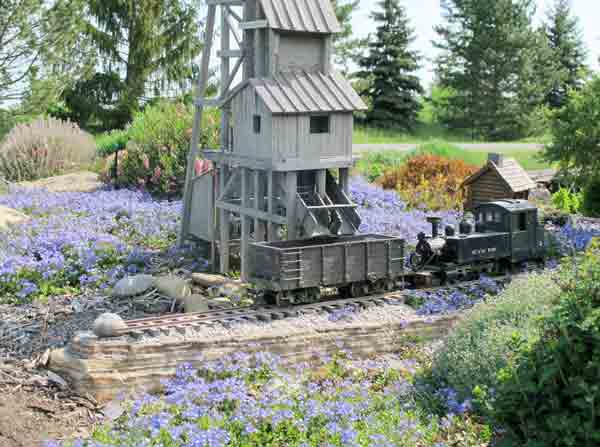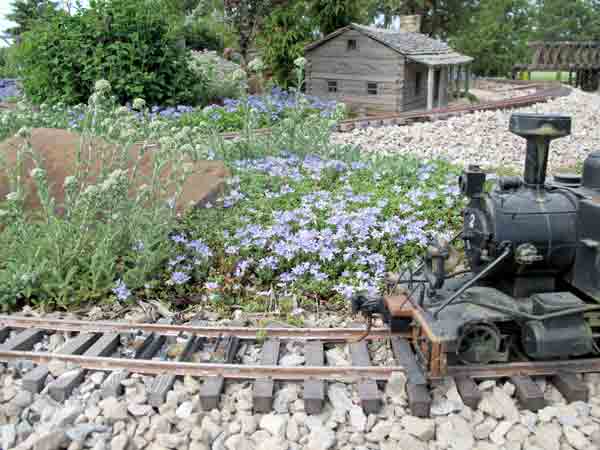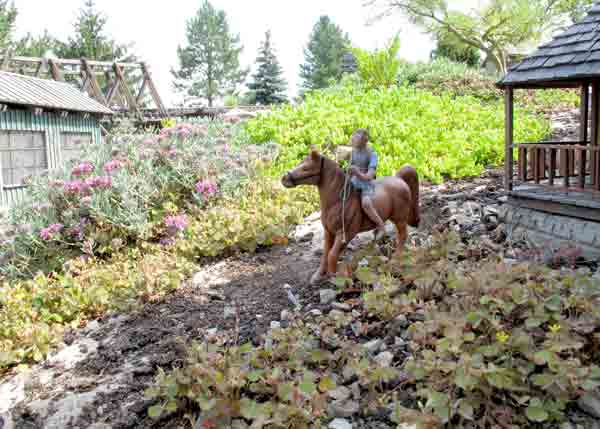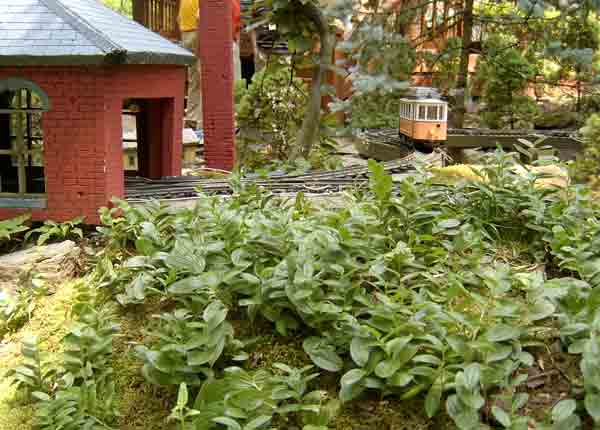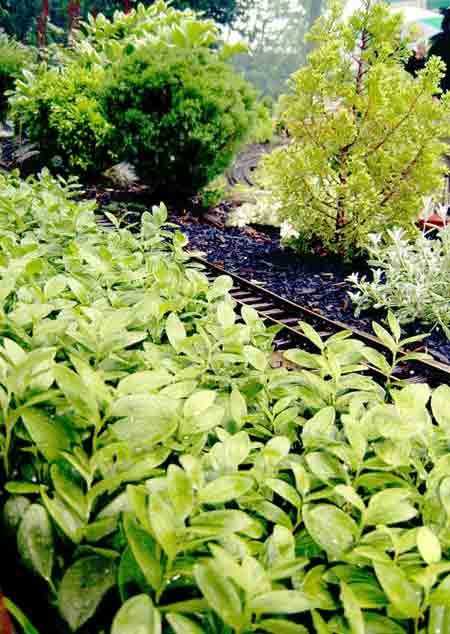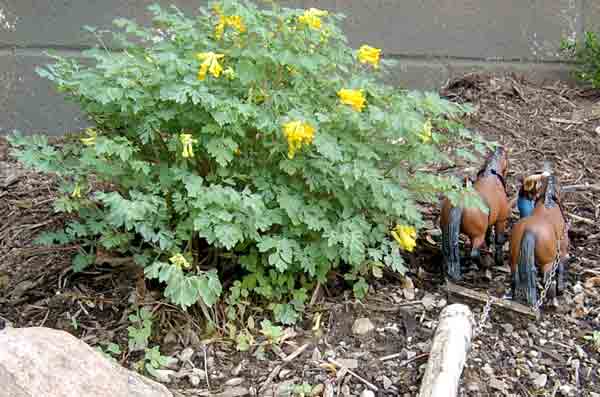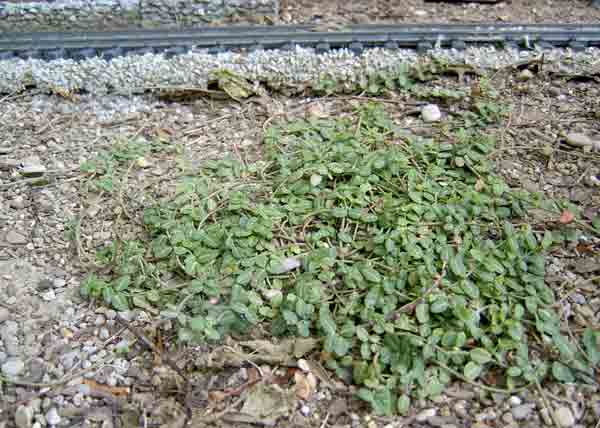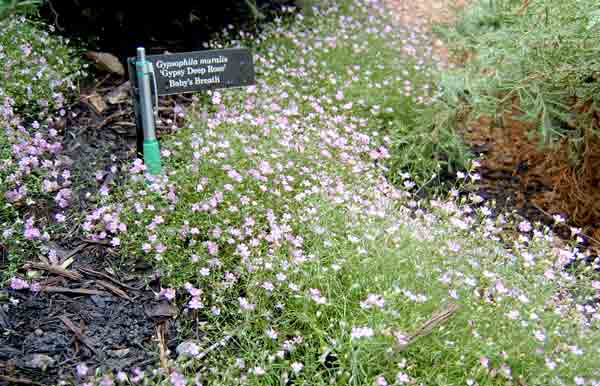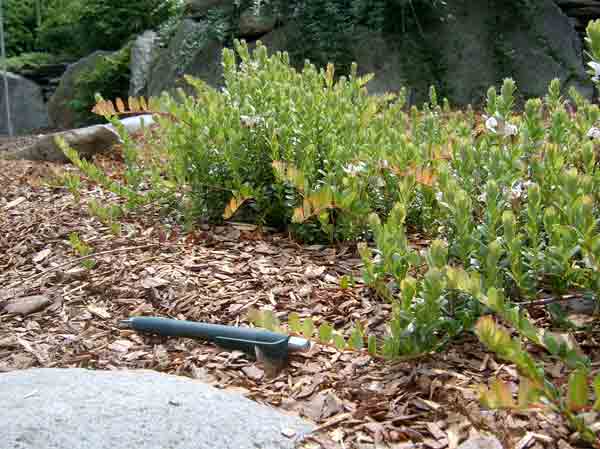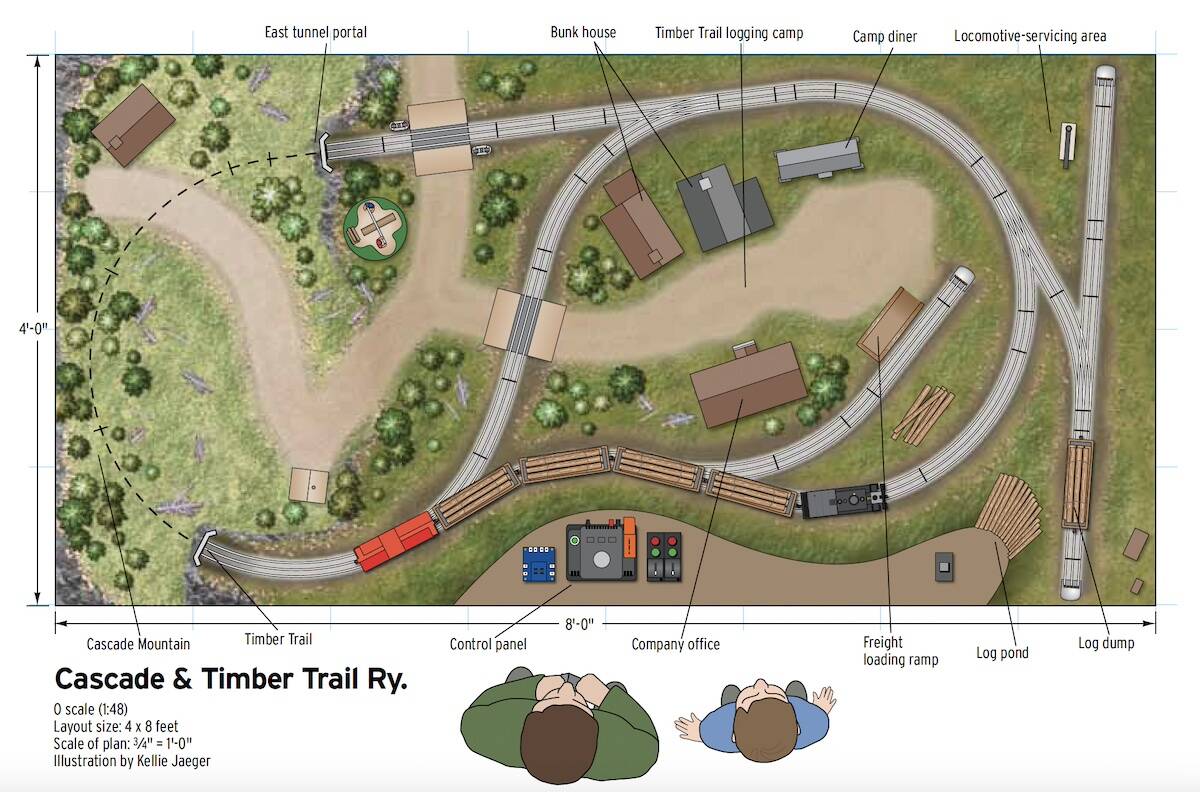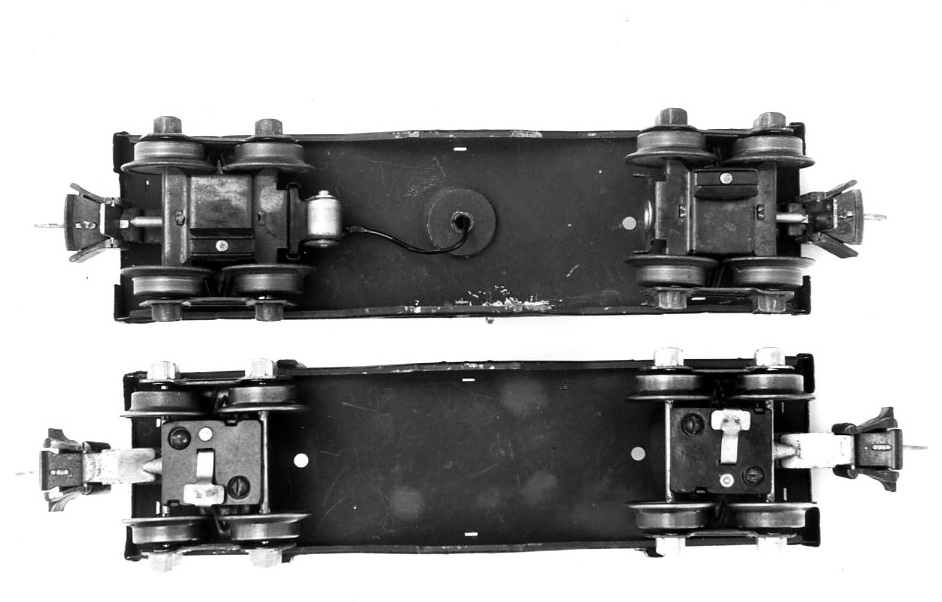The most versatile and widely used plants in garden railroads are groundcovers. This may be because there are so many creeping plants that are in scale for our railroads, with low growing, fine foliage. I also think part of the appeal of these plants is their unobtrusive contribution to the scene—they do not hide track, trains, and structures as trees and taller shrubs might. They are easy to deal with: they can be cut back or dug out to make room for new hardscape or an additional plant, while trees are more or less permanent in that they require much more effort to move. Groundcovers grow fairly quickly to fill newly planted areas or to take the place of plants that have succumbed to the vicissitudes of nature or the whims of the gardener.
Nature, for the most part, does not produce landscapes of all the same plant. Variety of species seems to be a given pattern in uncultivated areas of the world around us. The realism of our garden railroads is enhanced, I believe, by replicating this random growth of a variety of groundcovers. That said, there are the exceptional broad fields of wildflowers of the same species that captivate our eye and fill our nature calendars. The impact of this sameness is part of its appeal, and capturing a little of the effect would add to the charm of a part of the railroad garden. Photo 1 gives the viewer this impression, with a swath of Turkish veronica (Veronica liwanensis, Zones 3-9) in bloom. However, nearby is another variety of veronica, a.k.a speedwell (V. oltensis ‘Tiny Blue’, Zones 4-9), showing the tendency for related plants to intermix (photo 2).
If you are replicating farming or commercial plant production in your miniature garden, then monoculture (all the same plants in a given area) would appear appropriate. But in uncultivated, wild areas of your railroad, a variety of groundcovers would be the way to go, as illustrated in photo 3. My theme in this column is based on the saying, “Variety is the spice of life.” In this and the next issue I’ll show you a selection of lesser-used groundcovers to enlarge your repertoire of plants from which to choose.
Shade lovers
An unusual and beautiful groundcover for the shade is dwarf Solomon’s seal (Polygonatum humile, Zones 4-9). It grows 6″ tall in light-to-full shade and moist, humusy soil. White flowers are produced along the arching stem in mid-spring. Photos 4 and 5 show it in two different garden railroads, growing in the shade. It is not fussy about soil as long as it is not allowed to dry out. Solomon’s seal goes dormant during the hottest part of the summer unless it is in the shade and kept moist. It spreads fairly quickly and will grow under trees where other groundcovers are loathe to go.
Another groundcover that prefers shade is corydalis (Corydalis lutea, Zones 5-7). This ferny-leafed, clump-forming plant grows 1′ tall and produces lively yellow flowers from May to September (photo 6). It is a short-lived perennial that will steadily fill in shady spots by self-seeding, making it a good plant to cover areas that may not grow other groundcovers well. Average, well-drained soil suffices in full shade but constant moisture is needed in partial shade.
Still another groundcover suitable for shade is little-leafed winter creeper (Euonymus fortunei ‘Kewensis’, Zones 4-9, photo 7). It grows 3″ high and spreads by vines or runners in sun or shade. It will fill open areas rather quickly and, like all winter creepers, can become invasive. In areas where it can be contained, it could provide a green mat of durable foliage, tolerating a variety of soil and moisture conditions.
Sun lovers
Creeping baby’s breath (Gypsophila muralis) is an annual plant that would make a colorful groundcover (photo 8). It grows 6-7″ tall and produces rose-pink flowers all summer in full sun. Seeds can be started indoors in early spring or can be planted outside in the desired location after the last frost date. It requires no significant maintenance and will return the following year by self-seeding.
A most unusual plant to carpet the ground is small cranberry, or bog cranberry (Vaccinium oxycoccos, Zones 2-7, photo 9). It prefers a sunny location in the garden with wet to moist, acidic (peaty) soil. It grows as a small, prostrate shrub with vine-like stems, reaching up to 4″ tall and trailing up to 3′. The leaves are leathery, about 1/3″ long. White or pink flowers appear in early to mid-summer, becoming red berries about 1/2″ in diameter in the fall. In good conditions it will spread quickly. I grew this groundcover in my previous garden railroad with moderate success. I placed it in a low spot that was almost constantly moist and amended the soil with sphagnum peat moss.
For more ideas to help in your choices of groundcover plants, see the April 2008 GR, “A gallery of useful groundcover plants,” and the June 2012 issue, “Problems with groundcover.”





